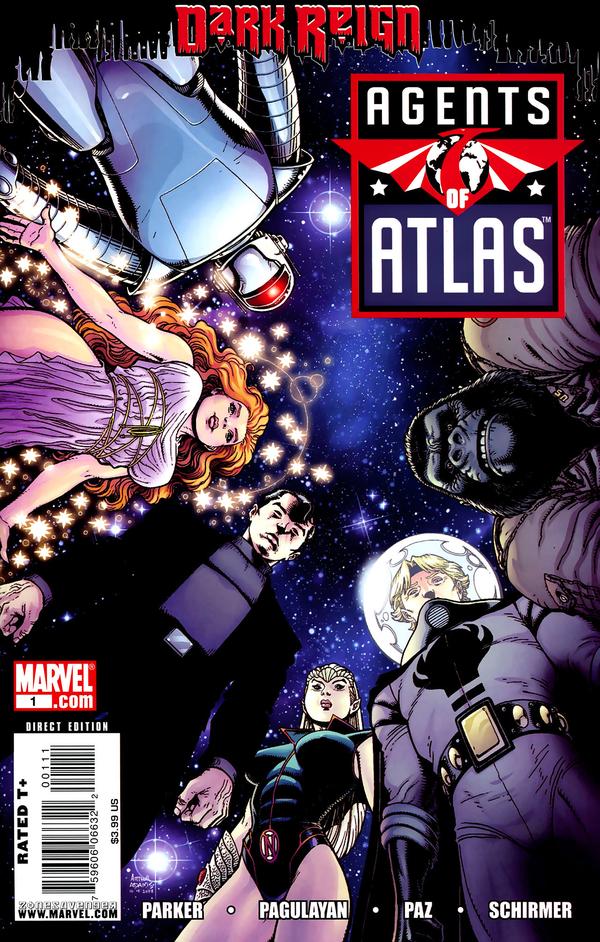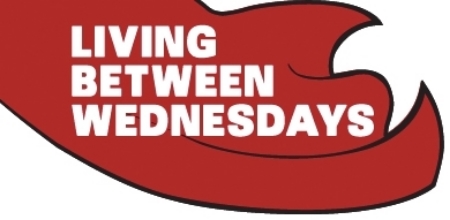Reading mainstream superhero comics is becoming a bit of a chore lately—if a comic isn’t part of a line-wide crossover that has two or three good ideas spread out over way too many issues, it’s rife with death, destruction, despair, and misogyny. Often, it’s both. That’s why I’m glad a book like Marvel’s Atlas is around. I don’t read superhero comics to be bummed out, I read ‘em so I can follow the adventures of reformed killer robots, talking dragons, and wisecracking gorillas who occasionally wear Hawaiian shirts.

Atlas has been around, in one form or another, for some time now. Writer Jeff Parker and Leonard Kirk launched the team (well, re-launched, but more on that in a minute) in a six-issue miniseries a few years back called Agents of Atlas, which introduced the covert superteam comprised of characters who were published separately by Marvel’s 1950s incarnation, when they were called--wait for it--Atlas. The team, made up of Gorilla Man, The Human Robot, Marvel Boy, Venus, Namora, and rejuvenated secret agent Jimmy Woo, had worked together briefly in the Fifties to fight the menace of the Yellow Claw (not really—this back-engineered origin was spun off from an issue of the original What If? series that imagined an Avengers team formed during the Eisenhower administration).

This diverse group reunites to help Jimmy track down his old nemesis, who is behind a globe-spanning science terror organization known only as the Atlas Foundation. However, by the end of that initial miniseries, Jimmy learns that he is the true heir to the Foundation, which dates all the way back to the Mongol Empire; seizing control of his destiny, and with his old comrades in arms, Jimmy sets about trying to change the Foundation from within—a task that may be impossible when the organization he commands is responsible for nurseries full of giant killer plants and orphanages populated by white-haired psychic toddlers.

Agents of Atlas appeared again (this time as an ongoing series) in the wake of Marvel’s Secret Invasion crossover, but was sadly cut short after 11 issues. Having that stupid Dark Reign banner on the early issues might have helped out with the initial sales, but that kind of quick sales fix is a short-term solution that hurts a book more in the long run—in my opinion, anyway. Regardless, Marvel’s commitment to this cult favourite has been surprisingly steadfast; the team appeared again in a two-part X-Men vs. Agents of Atlas mini, and then later in a four-part Avengers vs. Atlas series. There was also a recent Marvel Boy three-parter, which filled in the 1950s backstory of the team’s mysterious spaceman. And now, in the wake of yet another crossover (Siege), and with yet another banner (The Heroic Age), the gang is back again, in another ongoing simply titled Atlas. Despite the banner, however, Atlas doesn’t have much to do with the rest of Marvel’s publishing line—it occupies its own cozy corner of the Marvel U, one teeming with secret intrigue, pulp adventure, and mad science to beat the band.
We’re only two issues in, and so far the new Atlas is loads of fun. The retro adventurers are joined by the current incarnation of 3-D Man (whose predecessor was part of the lineup in the original What If? story, rather than Namora), a fugitive hero trying to unravel the mystery of a cabal of sinister aliens that only he can see. The art by Gabriel Hardman has a gritty quality reminiscent of Michael Lark, but he’s more than capable of handling the otherworldly aspects of Parker’s scripts (like the giant, remote-controlled subterranean golems who appear in issue #2). Elizabeth Breitweiser’s subtly psychedelic colour palette provides the properly glossy finish, and the covers are provided by some of the best in the biz. Terry Dodson turned in a slick montage of the team’s new lineup for the debut issue, and check out Carlos Pacheco’s interpretation of the original 1950s team for issue #2!

So, if you’d rather read about mystical hidden cities and electrically-charged zombies than drug-addicted antiheroes and sexually dysfunctional former sidekicks, give Atlas a try. The new series is a great jumping-on point—3-D Man’s entry into the team provides a great point of reference for new readers—but the earlier adventures are available in trade paperback as well. If you’re a fan of Astro City’s wistful approach to gee-whiz superheroics, and The League of Extraordinary Gentlemen’s shared universe of pulp archetypes, or even if you just think a book about a talking ape, an old-timey robot, a love goddess, and a secret agent cruising around in a flying saucer from Uranus (yeah, Gorilla Man laughs at it every time too) sounds like fun, then you’ll find Atlas is where it’s at.










